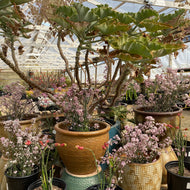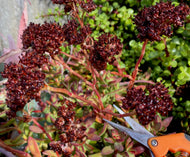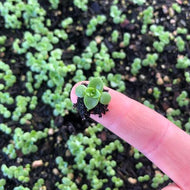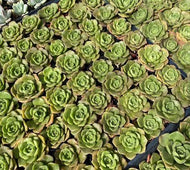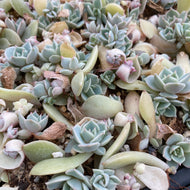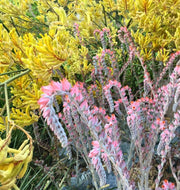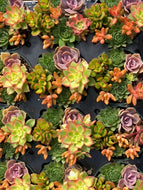We are huge agave fanatics here at Succulent Gardens. We love them not only for their unique beauty, but also for their ability to handle extreme conditions of both heat and drought. They re-define the term drought-tolerant, being able to handle long waterless periods beyond the capabilities of most succulent plants. Still, even agaves need care, especially during the hot summer months when the days are long and the sun is intense. In the following post, we will discuss some ways in which you can keep your agaves thriving through the summer. First, a bit of information about agaves will help to shed a little light on these amazing members of the plant kingdom.

Agaves belong to the family Agavaceae and includes not only the genus Agave, but also Yucca, Furcrea, Manfreda and Beschorneria. Agaves are monocarpic plants, meaning they flower once during their lives and die. Seeing a bloom spike on an agave is a bittersweet time: the blooms are incredibly beautiful and unusual, but it marks the beginning of the end in the life cycle of the plant. In my opinion, it is best to just sit back and enjoy the show. Some agaves will produce bulbils from their flower stalk, and others will offset or produce a flurry of suckers before the mother rosette dies. If you are lucky, you might even be able to collect some seed after the flowers are spent and the plant produces seed pods. Agaves were dubbed "New World Aloes" by the first plant expeditionaries from Europe because of their resemblance to aloe plants from the "Old World". Collectors became mesmerized by these bizarre, exotic plants and grew them in their private collections. Many agaves have now naturalized in parts of the European landscape, particularly in Italy and Spain, where the climate is favorable to their needs.
Agaves' natural distribution spans from the southwest United States down to southern Mexico, and their habitats vary from dry, high desert where temperatures fluctuate dramatically from day to night, to humid, tropical regions where temperatures are moderate and stable. These differences play a huge role in the care requirements for various agaves. For instance, Agave parryi, endemic to harsh, dry climates where the daytime sun is scorching and the winter nights are freezing, requires less attention than Agave attenuata, which needs protection from hot, direct summer sun and freezing winter nights. Knowing where your agave comes from will help you figure out what care is needed to help your agave thrive through the summer.
Irrigation of agaves in the summer is important. Agaves begin their seasonal growth period in the spring and continue all the way into the fall. This contrasts with other succulents like echeverias and crassulas which have a more robust spring growth period followed by a slow-down during mid-summer. Therefore, make sure your agaves are well irrigated during this time period to help foster healthy growth. During heat waves, water your agaves in the morning or evening to avoid issues like reflective burn or edema.

Protection from intense summer sun is necessary for many agaves, especially agaves from southern Mexico. Agave attenuata is one example. Buy some shade cloth from your local garden center and cover them during heat waves. The most crucial time to protect your agaves from the blazing sun is during the first heat wave of the season, before your agaves have had time to acclimate to the changing conditions and harden off. I always think of it like this: imagine spending a winter in Alaska, where your skin has not been exposed to sun for several months, then sunbathing in Palm Springs without sunscreen in the middle of July. This would be disastrous to your skin much like it is disastrous to allow your agaves to roast in full sun during the first summer wave of hot sun.
Agaves will benefit from fertilizing during the summer months. Help your agaves put energy into growth by using a balanced fertilizer with enough nitrogen to instigate vegetative growth. Liquid fertilizers and water soluble fertilizers act faster than osmotic ones. Fertilizer will prevent yellowing and color-loss while also making your agave more resistant to pests and early blooming. A stressed agave will begin its flowering process early in its life, and we all now know what that means. One word of caution about fertilizer: over-fertilizing, especially with fertilizers high in nitrogen, will spawn rapid vegetative growth which can lead to less hardened plants that are more susceptible to sun-scald. There is always the risk of too much of a good thing.
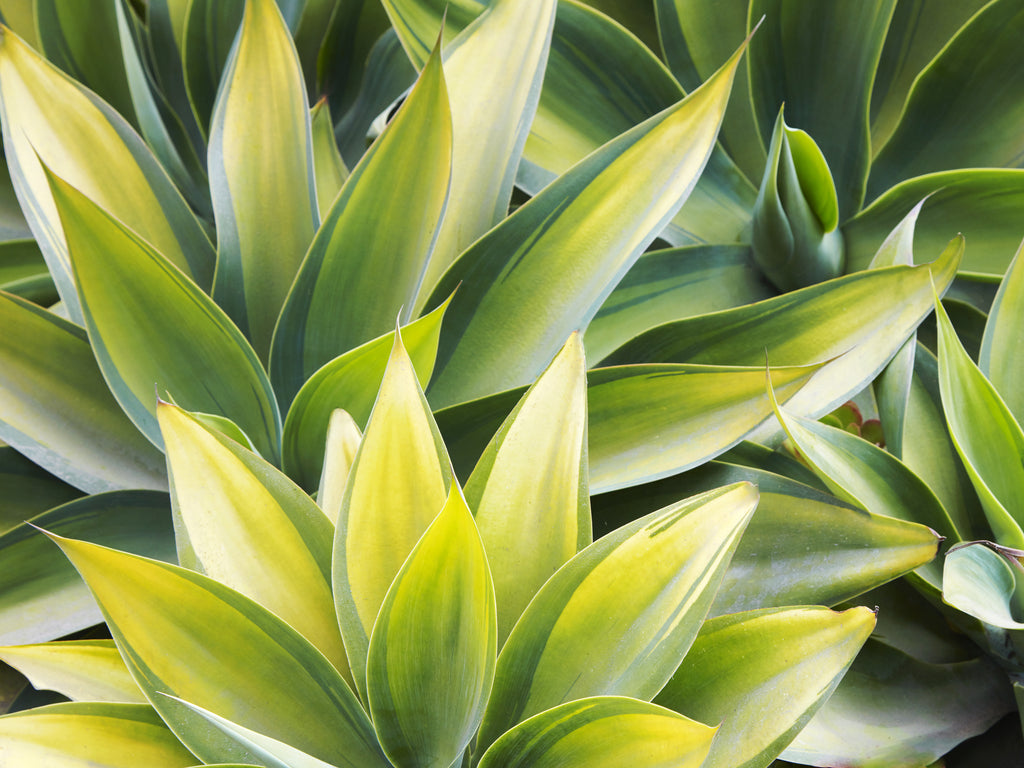
The fervor for agaves that took hold of Europe two centuries ago has not diminished in the present-day. New cultivars and hybrids are being introduced every year. Variegated forms, dwarf varieties and even inter-generic hybrids like Mangave are showing up in garden centers and plant society shows. Each of these plants requires specific needs, so knowing how to properly care for your plant will assure years of enjoyment!

